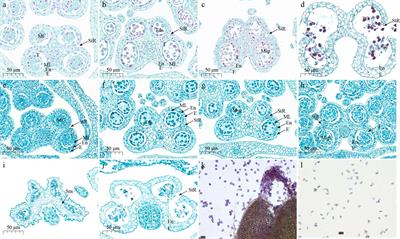Identification of male-fertility gene AsaNRF1 and molecular marker development in cultivated garlic (Allium sativum L.)

Garlic cultivars are predominantly characterized by their sterility and reliance on asexual reproduction, which have traditionally prevented the use of hybrid breeding for cultivar improvement in garlic. Our investigation has revealed a notable exception in the garlic line G398, which demonstrates the ability to produce fertile pollen. Notably, at the seventh stage of anther development, callose degradation in the sterile line G390 was impeded, while G398 exhibited normal callose degradation. Transcriptome profiling revealed an enhanced expression of the callose-degrading gene, AsaNRF1, in the mature flower buds of the fertile line G398 compared to the sterile line G390. An insertion in the promoter of AsaNRF1 in G390 was identified, which led to its reduced expression at the tetrad stage and consequently delayed callose degradation, potentially resulting in the male sterility of G390. A discriminatory marker was developed to distinguish between fertile G398 and sterile G390, facilitating the assessment of male fertility in garlic germplasm resources. This study introduces a practical approach to harnessing garlic hybridization, which can further facilitate the breeding of new cultivars and the creation of novel male-fertile garlic germplasm using modern molecular biology methods..
Read the full article at the original website
References:
